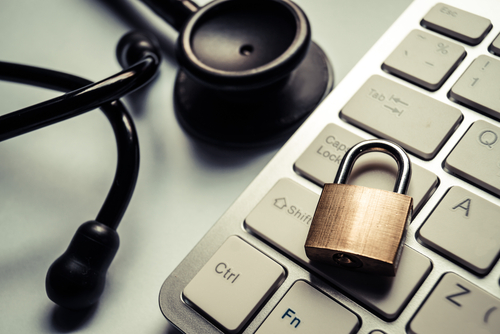Healthcare is a prime target for cyber attacks. If you’re a hacker, it’s a no-brainer – the sheer amount of personally identifiable information (PII) that healthcare organizations house and provide access to is a juicy prize worth the undertaking.
Even with the existence of HIPAA (Health Insurance Portability and Accountability Act of 1996), many healthcare organizations are still in a vulnerable state. Crucial processes such as overhauling legacy systems and mapping out personal healthcare information (PHI) data flow to create encryption and decryption protocols make transitions both time-consuming and costly.
But with millions of patients at risk for identity theft, false health insurance claims, and other exploits, the responsibility for proper management and safeguarding of personal information cannot be taken lightly.
In this article, we aim to arm healthcare professionals with a deeper understanding of the importance of data security. The list below sheds some light on the different ways that healthcare providers and staff members can create a robust, resilient, and secure data environment.
7 Ways Healthcare Providers Can Keep Data Secure
Upgrade Systems
One of the biggest challenges healthcare providers face is upgrading vulnerable legacy systems. An overhaul can be costly, but in the long run, the pay off in efficiency and better security in patient data management is simply worth the investment.
Encrypt Devices
In 2017, an electromyography (EMG) device was stolen from a hospital because it was mistaken for a laptop. Unfortunately, it contained data on 836 patients that included birth dates, health complaints, and medical record numbers. Indeed, even in facilities with up-to-date systems, portable devices housing important information need to be protected.
Test and Patch Electronic Devices
Health IT Security shares the disturbing finding that only 5% of healthcare organizations test the security of medical devices yearly. What’s more, security budgets only increase after a cyber attack has occurred.
As we discussed before, medical devices connected to a facility’s network, no matter how innocuous its uses are, can serve as access points for cyber attacks. And similar to how outdated computer software can have bugs that can be exploited, medical devices that aren’t properly updated are open to malicious manipulation.
Encrypt Data
A primary reason for data encryption is the avoidance of hefty fines in the event of an actual data breach, as in the case of Blue Cross Blue Shield of Tennessee’s 2012 settlement of HIPAA violations.
Encryption of the actual data adds another layer of deterrence since, in the event of a successful breach, encryption can prevent files from being accessed as long as the original rights still belong to the owner.
Use Multi-Factor Identification
Info Security wisely points out that 2FA is not sufficient protection from cyber attacks since it can still be circumvented using methods like the interception of calls and SMS, real-time phishing, and malware.
Adaptive authentication that combines the use of different technologies like geolocation, facial recognition, retinal scans, AI analysis of user behavior, and IP address identification is a better solution. With multiple layers of security, it simply provides more solid protection than 2FA ever could while maintaining ease of access for users.
Delete Data That’s No Longer Needed
There are several reasons why data deletion is an important part of efficient security management. Chief among them is that keeping PHI records past a certain date can be tantamount to a costly violation.
HIPAA regulations, as well as state and federal laws, have precise guidelines on patient information retention and deletion. Besides, storage management can get complex, and the hardware needed to store enormous amounts of data can be very costly. Essentially, the more data a facility stores on-site, the higher the risk and the larger the amount of liability there is when a data leak occurs.
Staff Training
Encrypted connections, state-of-the-art firewalls, office doors that only open with retinal scans and facial recognition – all of these can still be circumvented via unsuspecting staff members.
They could fall victims to social engineering schemes like phishing campaigns, vishing (phishing over the phone), and may even originate from malicious persons working within the organization who share confidential information in exchange for compensation or a better job position elsewhere.
Multiple security experts advocate for educating staff on what signs to look for, such as how to identify fake emails and suspicious phone calls, as the best means of protection.
Cloud-Based Services: The Next Safer Alternative?
While all these methods combined can prove quite effective, the storage of data on the cloud is perhaps the next step in data security.
Still, if regulations and organizations can broker a successful compromise, going cloud would pose several advantages. A serious benefit is that fewer data would be vulnerable to on-site attacks like malware, phishing, and the outright stealing of physical devices that contain sensitive information.
Another advantage is that the cloud can serve as a sort of backup hard drive – if at any given time information on-site is corrupted or lost, a copy of it can still be retrieved. It also allows for mobile access to information for healthcare employees that need to use files off-site or for those who work at multiple offices and are constantly on-the-go.
Shifting to the cloud isn’t as simple as it looks, however. On top of strict compliance requirements to HIPAA, healthcare providers need to make sure their third-party provider is up to snuff when it comes to how the technology is deployed.

